10 Facts about African Penguins
1. The African penguin is an endangered species. What’s threatening them? One problem is that humans gather penguin droppings, called guano, for fertilizer. But to gather large amounts, heavy equipment is brought in that destroys the penguins’ nesting sites. Other threats include humans collecting penguin eggs for sale, competition with humans for fish, and oil spills.
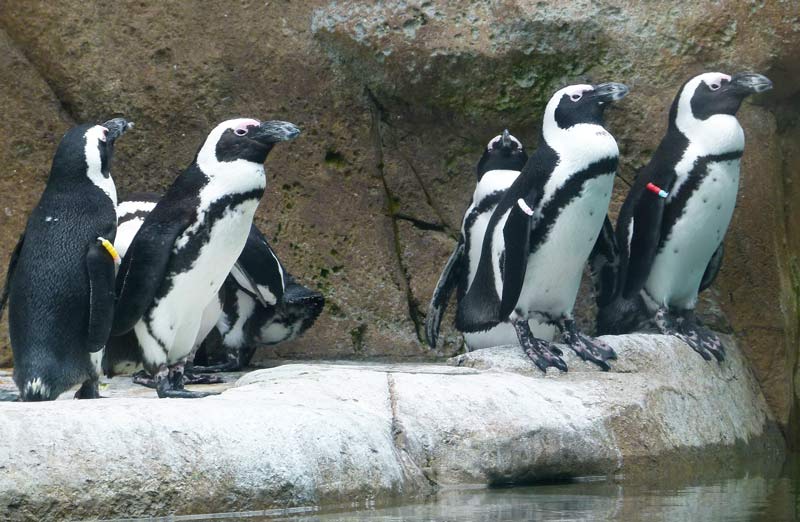
2. The African Penguin (Spheniscus demersus), also known as the Black-footed Penguin is a species of penguin, confined to southern African waters. It is also widely known as the "Jackass" Penguin for its donkey-like bray, although several related species of South American penguins produce the same sound.
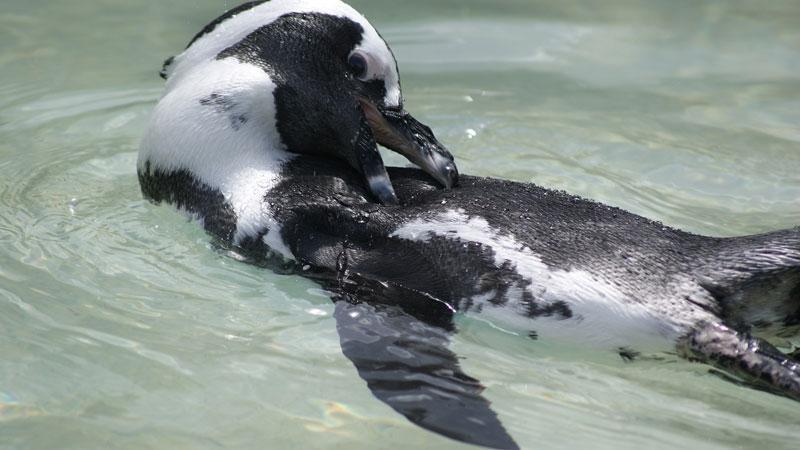
3. African penguins, like all other Penguins is a flightless bird, with a streamlined body, and wings stiffened and flattened into flippers for a marine habitat.
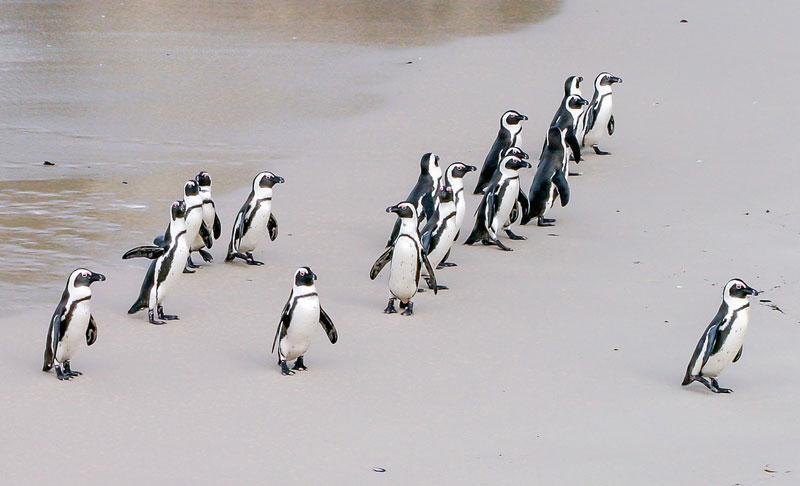
4. Adults weigh on average 2.2–3.5 kg (4.9–7.7 lb) and are 60–70 cm (24–28 in) tall, males tend to be a little bigger than the females.
It has distinctive pink patches of skin above the eyes and a black facial mask; the body upper-parts are black and sharply delineated from the white underparts, which are spotted and marked with a black band. This pink gland above their eyes helps them to cope with changing climates. When the temperature gets hotter, the body of the African Penguin sends more blood to these glands to be cooled by the air surrounding it. This then causes the gland to turn a darker shade of pink.
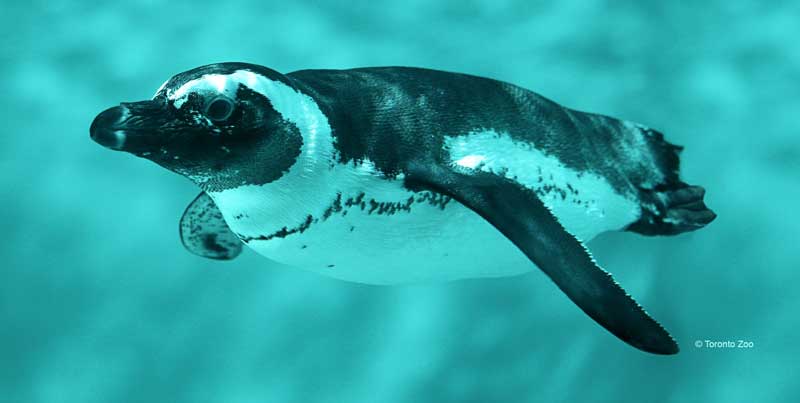
5. The African Penguin is a pursuit diver. An average dive of an African Penguin lasts about two and a half minutes and is regularly about 30 metres in depth, although dive depths of up to 130 metres have been recorded. Their short tails and flipper-like wings that help them navigate in the water, while their webbed feet help propel them.
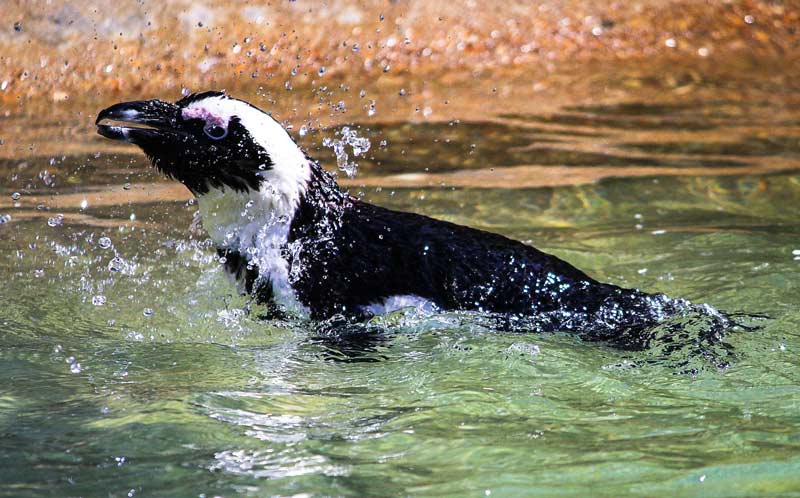
6. African Penguins feed primarily on shoaling pelagic fish such as anchovies, pilchards (sardines), horse mackerel and round herrings, supplemented by squid and crustaceans. When on the hunt for prey, African Penguins can reach a top speed of up to 20 kilometres per hour, but average swimming speed is 7km/h.
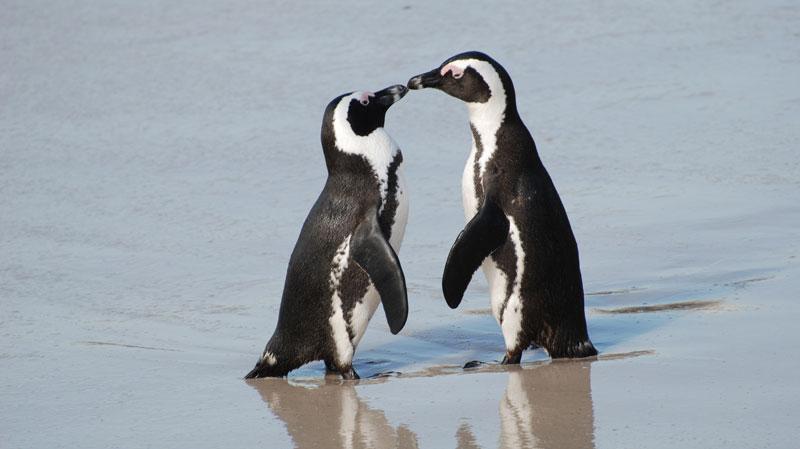
7. They start breeding at approximately 4 yrs old, and normally lay 2 eggs in a nest that is burrowed in guano or sand. The incubation period is about 38-42 days, with the mum and dad sharing the incubation duties.
8. Chicks can hold themselves upright at about 6 days old, but don’t walk until they are 3 weeks old. Young penguins have blue-grey backs and white fronts, without the black and white markings of their parents. Chicks fledge at 60 to 130 days, the time depend on environmental factors like availability of food. The fledged chick then go to sea on their own and return to their natal colony after a lengthy time period of 12–22 months to molt into adult plumage.

9. The average lifespan of an African penguin is 10 to 27 years in the wild, and can live up to 30 in captivity.
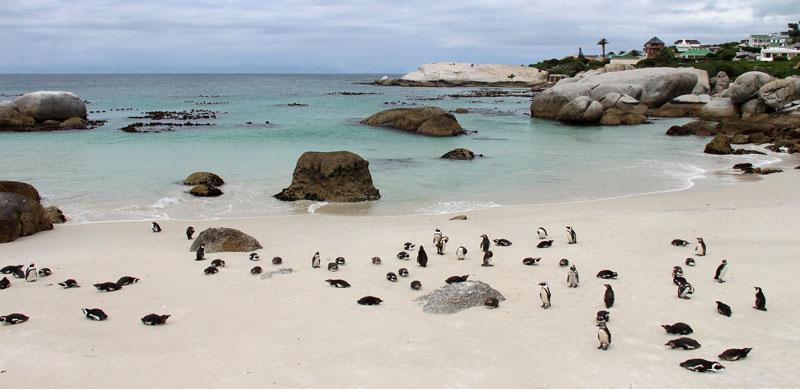
10. There are 29 known colonies of this species of penguin. The ones with higher populations are on Saint Croix Island, Dassen Island, Robben Island, Boulders Beach and Mercury Islands. Its distribution covers Namibia and South Africa.
Source
TEXT:
Stoney Point, Betty’s bay - Overstrand Guide
Various Websites
Photo Credit:
Tomer Ben-Yehuda - Facebook
Jeanette du Toit - Jaydee Media
Pizabay
Toronto Zoo
Call us and schedule your listing today! Contact Us
Copyright © 2025 Hermanus Online Magazine. Web Development by Jaydee media.

